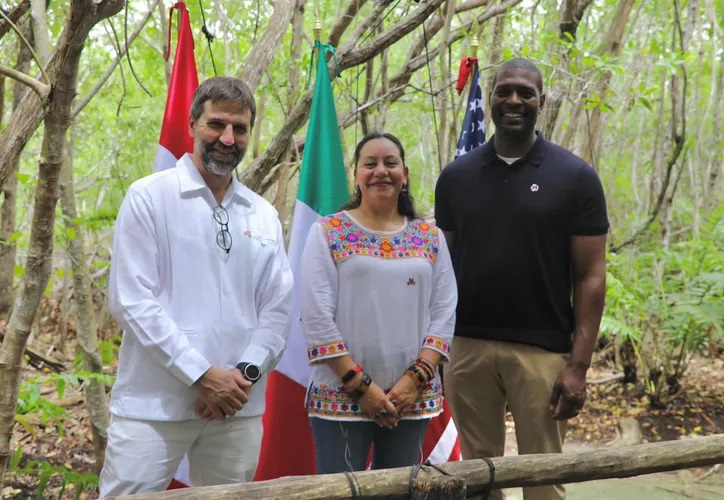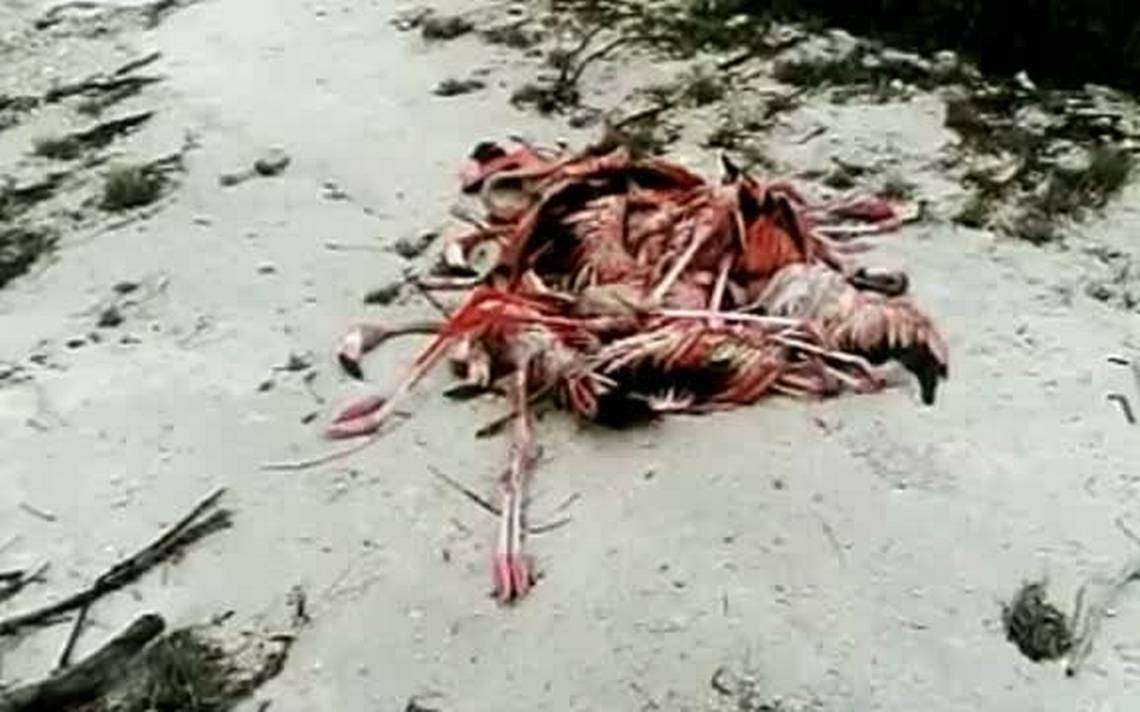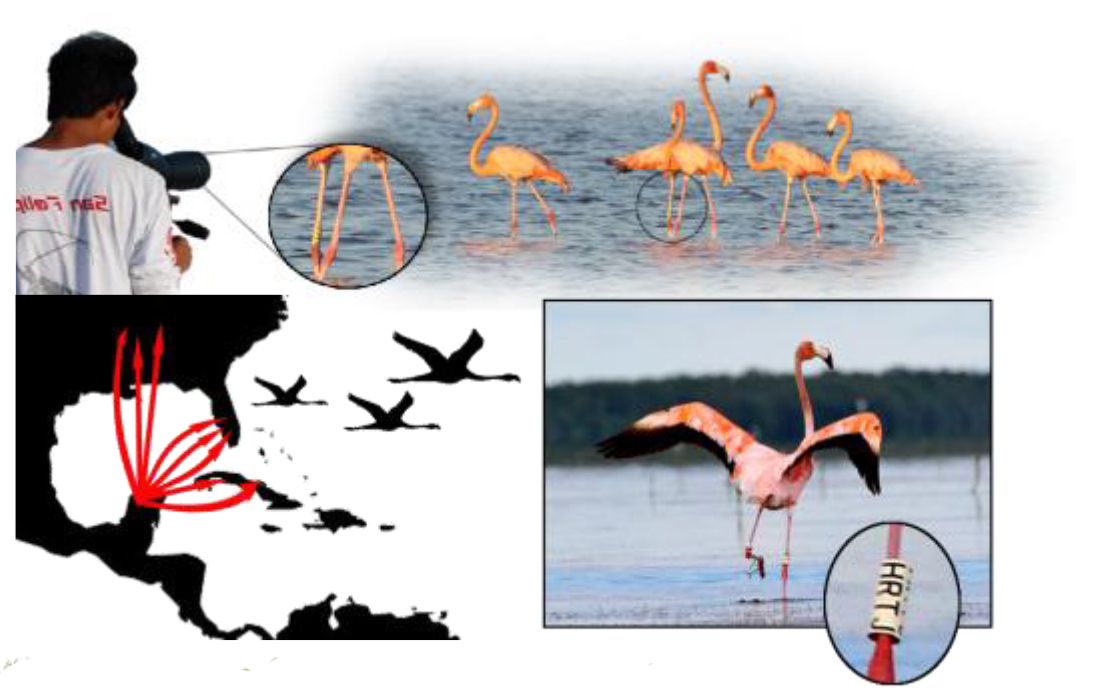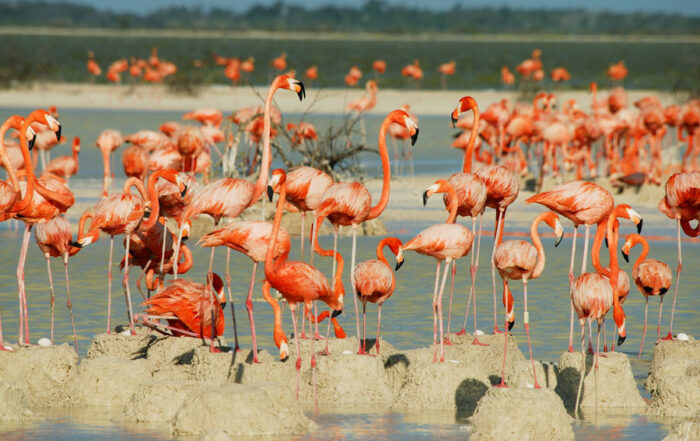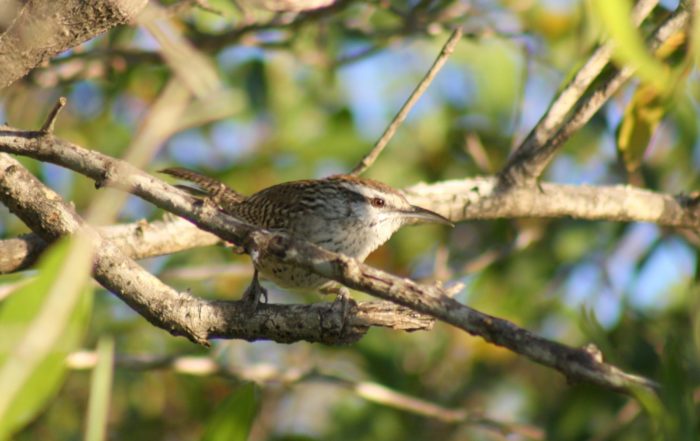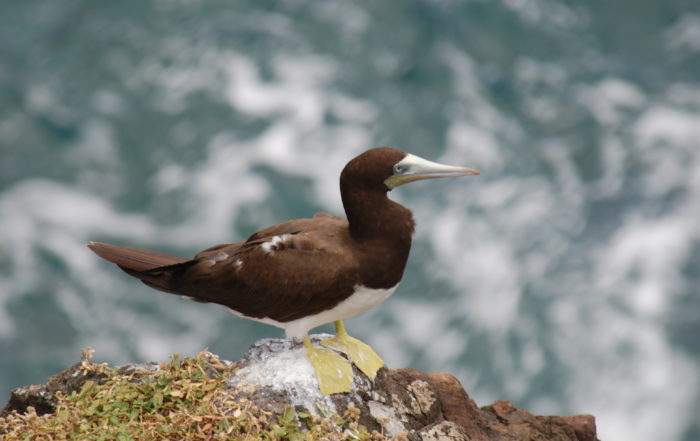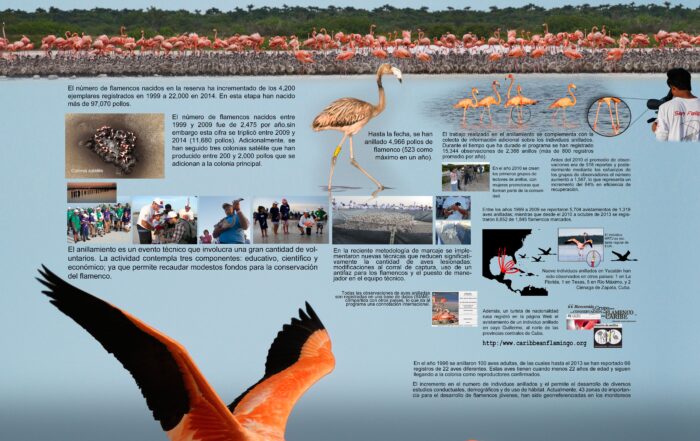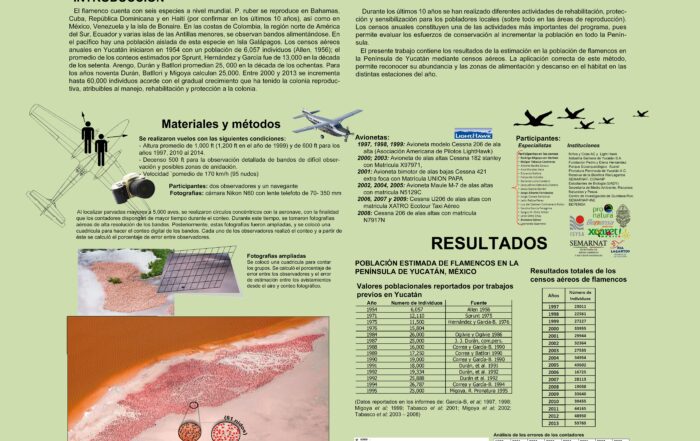CARIBBEAN FLAMINGO CONSERVATION GROUP
GCFC
WHAT IS GCFC?
The Caribbean Flamingo Conservation Group (CFCG) is an alliance of specialists associated with different organizations and institutions interested in and responsible for the conservation of this species and its habitats. It is currently the scientific arm of the Caribbean Coast Conservancy and is represented in each country by a coordinator who, in turn, is part of the CCC's advisory council to fulfill its mission.
OBJECTIVE:
To promote the union, liaison and exchange of experiences among groups of specialists belonging to each of the Caribbean countries that have the presence of the flamingo on their coasts, so that they become disseminators of the environmental problems faced by this species at the local and extraterritorial level, coordinating efforts in the conception, updating and implementation of a single regional strategy that allows the conservation of viable populations, thus contributing in an essential way, with the mission and vision of CCC by being part of its scientific council.
GENERAL GUIDELINES FOR ACTION:
Generate a regional conservation strategy for the sustainability of the Caribbean Flamingo populations.
To this end, the first step is the integration of a steering group, made up of members with legal, political and scientific support, in which environmental administrations, civil organizations, academic institutions, communities, researchers and other interested persons will also be invited to participate. Each one of them will have a commitment to develop concrete actions related, initially, to the compilation and evaluation on a national scale of the available scientific information and practical experience, the conformation of a baseline with which to continue conservation management, and the establishment of the first non-formal (or non-binding) contacts with potential key actors in the process of research or conservation of the flamingo. This group would also work on the strategic planning of the Caribbean Flamingo Conservation Group.
In order to be efficient, this management requires a dynamic and iterative process in planning, execution and evaluation, so the information generated by each country is provided to the GCFC management.
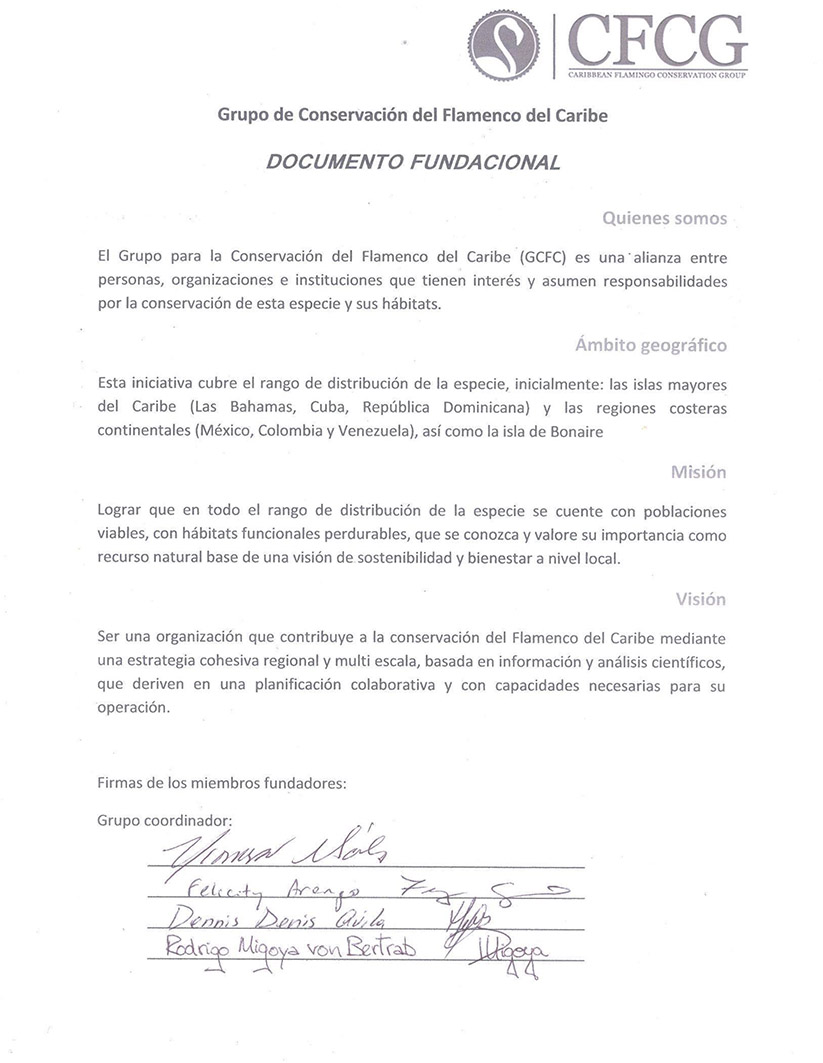
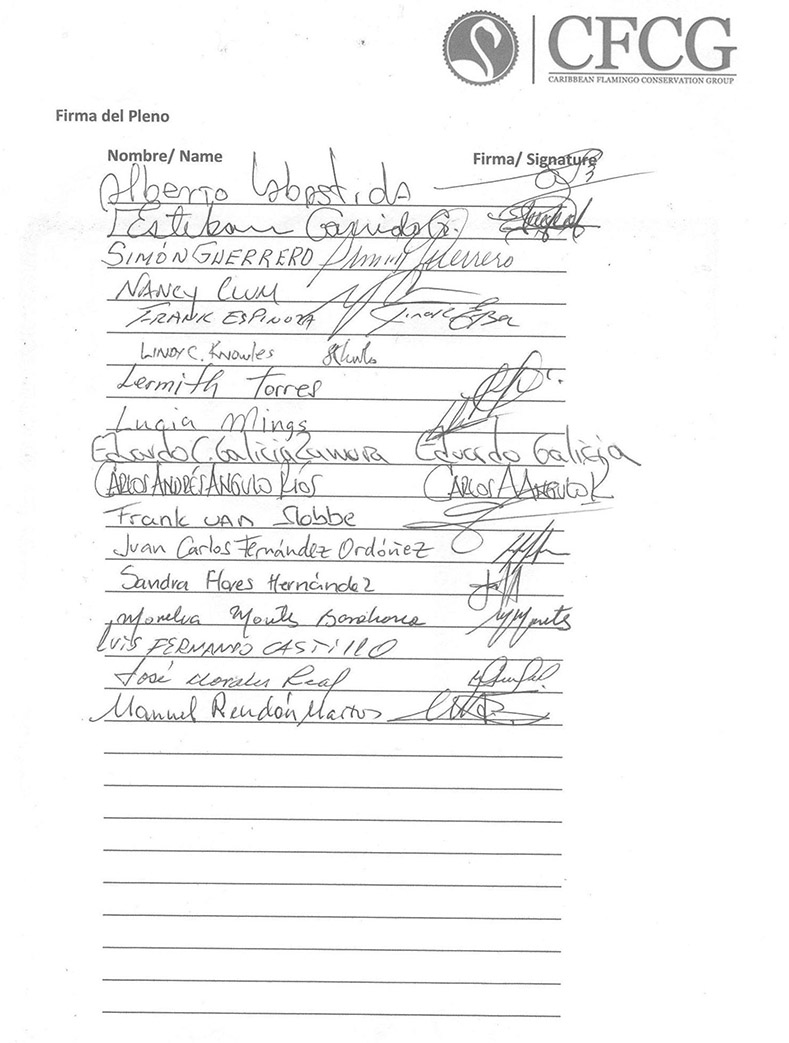

THE CARIBBEAN FLAMINGO CONSERVATION GROUP'S STRATEGIC PLAN FOR SCIENTIFIC RESEARCH
In the plenary session on February 8, 2013, at the II International Workshop of the Group for the Conservation of the Caribbean Flamingo (CFCG), specialists from the countries directly involved in the founding of this group met, with the goal of knowing that potential investigations are replicable between countries, which can be done among all and in what priority steps can the group support, to achieve the objective of homogenizing the necessary studies and achieve proposals for solutions in the short, medium and long term.
In the presence of representatives of specialists and people involved in the study and conservation of the flamingo in Mexico, Cuba, Bahamas, Venezuela, Colombia, the Dominican Republic, Bonaire and Antigua, the following elements were discussed and agreed to be reviewed and improved as part of the GCFC science policy programmatic platform.
Based on the premise that the three basic pillars of any species conservation program should focus on research, education and management, since all three groups of actions are basic to achieving its goal, the Caribbean Flamingo Conservation Group agreed on the vital need to develop research to fill the significant information gaps that exist and to complete a baseline to support the evaluation of future changes or responses to management actions.
Consequently, they agree to the following CLAUSES
NEWS
Environmental ministers from Mexico, the United States and Canada visit the flamingo breeding colony at Ejido San Crisanto.
The head of Mexico's Ministry of Environment and Natural Resources (SEMARNAT), María Luisa Albores González, hosted her counterparts, the Minister of Environment and Climate Change of Canada (Environment Canada) and the Minister of [...]
Hurricane Irma Devastates the Caribbean
Hurricane Irma Devastates the Caribbean, with fatalities and millions of material losses in its wake, and one of the emblematic bird species of this region has also been severely affected. [...]
CartaCuba Bulletin – Banding. News and prospects
Ringings of Caribbean Flamingos in Yucatan: current situation and perspectives ABSTRACT For fifteen years, the NGO Niños y Crías AC, in coordination with the management of the [...]
ARTICLES / BLOG
The reproduction of the Caribbean flamingo in Venezuela
THE REPRODUCTION OF CARIBBEAN FLAMENCO IN VENEZUELA In Venezuela, the coastline in the Caribbean Sea, from Castillete in Zulia, to the Paria Peninsula, Sucre, is 2,813 km long, where there are [...]
Reproductive phenology of the Yucatecan Matraca
Reproductive phenology and nesting success of the Yucatecan Matraca ABSTRACT In the present study, the reproductive phenology was described and the nesting success of the [...]
Waterfowl Conservation for the Americas
The North American Waterfowl Conservation Plan SUMMARY Waterfowl have been the objects of human praise for centuries. Have served [...]
PRESENTATIONS AND POSTERS


